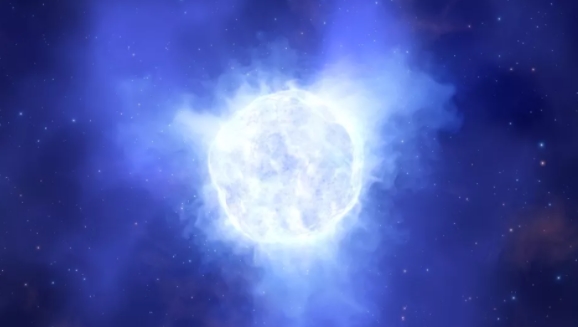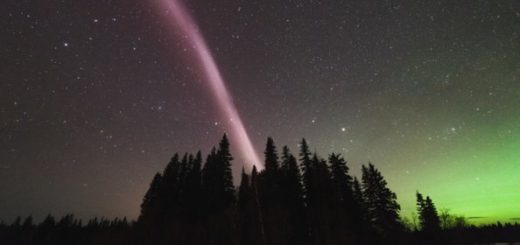Giant star pulls off vanishing act. Did it become a black hole or was it all an illusion?

An unstable massive star has suddenly vanished from view, and astronomers aren’t sure if it collapsed into a black hole or is playing peek-a-boo behind galactic dust.
The star was too far away to spot on its own, but it showed up in the spectrum, or light signature, of the Kinman Dwarf galaxy, which is some 75 million light-years away from Earth. The spectrum showed that the distant galaxy contained a late-stage blue variable star that is 2.5 million times brighter than the sun. Stars of this type are known to be temperamental, with dramatic shifts in their spectra and luminosity (inherent brightness).
The blue variable star’s signature appeared in observations gathered between 2001 and 2011. The European Southern Observatory’s (ESO’s) Very Large Telescope, however, couldn’t find the star during two separate observing sessions in 2019 with different spectrograph devices. Those instruments included the Echelle Spectrograph for Rocky Exoplanet and Stable Spectroscopic Observations (ESPRESSO) and the X-shooter.
An artist’s depiction of what the bright blue variable star in the galaxy Kinman Dwarf might have looked like before its sudden disappearance. (Image credit: ESO/L. Calçada)
What’s more, the Kinman Dwarf showed no signs of a supernova, or star explosion, during the intervening years — leading the team to speculate the star may have collapsed directly into a black hole, instead of going supernova first.
“We were surprised to find out that the star had disappeared,” lead researcher Andrew Allan, a Ph.D. student at Trinity College Dublin in Ireland, said in an ESO statement. If the star has indeed gone directly from being a star to being a black hole, Allan added, “this would be the first direct detection of such a monster star ending its life in this manner.”
To learn more, the team analyzed older data collected by X-shooter and VLT’s Ultraviolet and Visual Echelle Spectrograph between 2002 and 2009. (ESPRESSO was only installed in 2016). Other telescopes were also used for the historical study; between VLT’s spectrographs and these other observatories, astronomers easily confirmed the presence of the now-missing star in the older observations.
The archival search also revealed new information. The star, the old data suggested, may have been performing a strong outburst that finished sometime after scientists’ last observation in 2011. The outburst would have produced a large rate of mass loss and would have caused the star’s luminosity to temporarily spike.
A Hubble Space Telescope image of the Kinman Dwarf galaxy.
A Hubble Space Telescope image of the Kinman Dwarf galaxy. (Image credit: NASA, ESA/Hubble, J. Andrews (U. Arizona))
It’s what happened after this outburst that has astronomers puzzled. If the star did indeed collapse into a black hole, this is an unusual life path for a late-stage blue star like the one in the Kinman Dwarf. Usually, the sequence would see the star exploding into a supernova first, before the strong gravity from the event pulls it into a black hole.
One potential explanation, the astronomers think, is that perhaps the star lost so much mass that it became less luminous and is now partly hidden by dust in the galaxy.
The astronomers plan to follow up on their work with a more powerful observatory, when it is ready. ESO’s Extremely Large Telescope will have a single 127-foot (39 meters) mirror, compared with the VLT’s combined aperture of 107-foot (32 m) mirror across four telescopes. That would make it large enough to spot individual stars in distant galaxies like the Kinman Dwarf. The new telescope is scheduled to see first light in 2025.
A study based on the research was published Tuesday (June 30) in the Monthly Notices of the Royal Astronomical Society.



 Creators of mankind
Creators of mankind Description of “Tall white aliens”
Description of “Tall white aliens” Where they came from?
Where they came from? About hostile civilizations
About hostile civilizations The war for the Earth
The war for the Earth “Tall white aliens” about eternal life
“Tall white aliens” about eternal life Video: “Nordic aliens”
Video: “Nordic aliens” Aliens
Aliens Alien encounters
Alien encounters The aliens base
The aliens base UFO
UFO Technology UFO
Technology UFO Underground civilization
Underground civilization Ancient alien artifacts
Ancient alien artifacts Military and UFO
Military and UFO Mysteries and hypotheses
Mysteries and hypotheses Scientific facts
Scientific facts


















